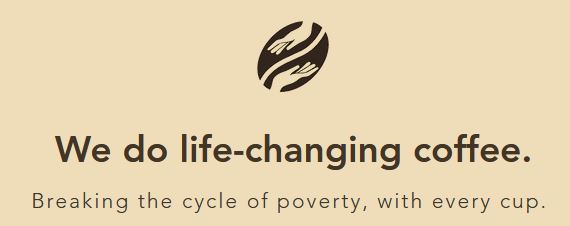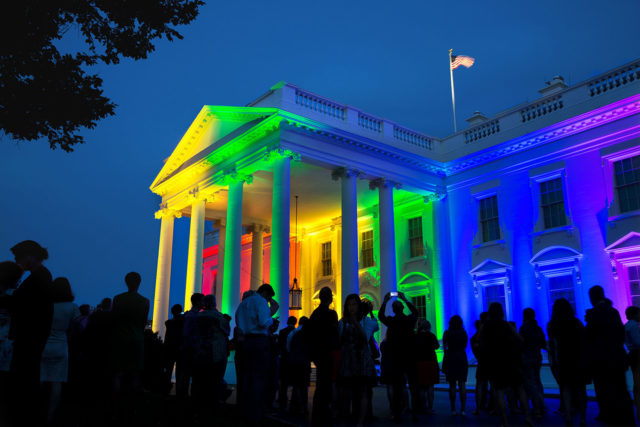4 Discourse arenas
Chapter 3 on Publics flagged the importance of understanding the material places in which public interest communication takes place. These places in which public interest communication occurs are often called ‘discourse arenas’ in communication theory (see Heath & Waymer, 2018) or ‘public arenas’ by French sociology scholars (see Cefaï, 2016). Such places include sites where civil society comes together, like public meetings, in rallies and street marches; by governments, in parliamentary meetings and courts; and through the many media channels available today. Arenas provide the opportunity for public problems to be aired and for publics to work individually or collectively to argue different interests and ideas. In turn, we might use the expression ‘public interest communication in action’ to describe how these places – whether physical or mediated – become places of action.
They have provided forums for public debate for centuries – from the ancient Greeks in the Agora or city centre; to Speaker’s Corner in London’s Hyde Park, originating in 1866 with a protest; and the many speeches given to audiences in the modern area at rallies and marches.
Click on the slideshow to see images of public debate over the millenia. From the Greek orators, to the many voices spoken at the famous Speaker’s Corner, Hyde Park, London, to the American suffragettes and democratic activists around the globe, free and open public debate is a critical component of public interest communication.
With the rise of the online world, speaker’s corners have continued to evolve. Now, public interest communication can take place in any corner of the internet. So long as an individual has internet access, they are able to voice their concerns and create discourse arenas in any online context. These can range from social media sites such as TikTok, Instagram and Facebook, or to the ‘dark web’, or mediated TED talks that place experts before live and global audiences. Every hour of every day new materials are being uploaded online to prompt debate, share ideas and educate others.
Public exchange sites
Leading French sociologist Daniel Cefaï (2018) describes public arenas as: “conceived as a place for exchanging rational arguments, for the reflexive circulation of discourse, the expression of collective identities or the formation of public opinion”.
These places connect communication, publics and interests so closely that they are intermingled and almost impossible to tease apart. As Cefaï (2018) says, the public arena becomes the product of acts of communication while the public is created through carrying out performances and uttering arguments within the arena.
Consider the following example: the Sydney Gay and Lesbain Mardi Gras, a festival which has become a celebrated global, cultural event. First held in Sydney in 1978 as a street protest for gay rights, resulting in violence and police arrests, it has evolved into a celebration of LGBTQI+ rights, with participation, inclusivity and partnerships at its core. In the 2020s, Mardi Gras presents a collection of social and political narratives, using a wide range of discourse arenas – from the televised street march held in February/March, to global media coverage, with events held in coffee shops, local businesses and entertainment venues all over the city – Mardi Gras has become a multifaceted network of events that celebrates the LGBTQI+ community (Johnston, 2020). As stated in its strategic plan: “Much has been achieved by LGBTQI communities since early activists took to the streets” (Sydney Gay and Lesbian Mardi Gras, 2019). These changes are illustrated over decades of social change, illustrated in the festival’s themes: from ‘Power in the Darkness’ in 1979, to ‘Fearless’ 40 years later in 2019, and ‘United We Shine’ in 2022 (Johnston, 2023).
“Often embedded in decades of protest and lobbying, movements such as LGBTQI+ rights, brought to life in Mardi Gras, show how civil society can effect change through ongoing protest, publicity and debate,” (Johnston 2023).
As such, these arenas, while visually displayed as a festival, also become public interest battlegrounds, as outlined in the next section.
Discourse arenas of the 21st century: Sydney Gay and Lesbian Mardi Gras
Although arenas are highly diverse in nature they have several things in common. First, they are always in public and always before an audience; second; they present different types of expression and argumentation; third, they require reasons to be given through discussion or argument (Cefaï, 2018). Public arenas have been successful in providing space for public issues and problems to be aired by members of civil society, forcing governments to take ownership of problems, and providing opportunities for social change to occur. For example, consider the way animal rights have risen up the agenda in recent years with social and legal pressure brought to bear in favour of living conditions (such as free ranging for hens) also reflected in the rise in veganism. The arenas provide sites for the public exchange of ideas — e.g public protests, media, websites, media developed by activist groups like Voiceless, industry lobbying and so on.
Public arenas certainly do not present simple solutions, but they do present places and opportunities for public communication to take place. As such, they are as much about raising attention as they are about finding solutions or outcomes. Cefaï calls this part of problem-centered democracies in which pragmatic solutions are sought.
Podcast by Michaela Cameron: Using the economic arena to help alleviate poverty in Kenya
In this podcast Michaela Cameron tells the inspiring story of Nice Coffee Co, a social enterprise which uses the economic arena to empower Kenyans, build their economic agency and construct pathways out of poverty. Nice Coffee Co uses their product as a channel for educating others about the problem of poverty then enabling consumers in other countries to help alleviate this problem by purchasing their product.
Read more about how the Bond university business and commerce student Jim Chapman launched The Nice Coffee Co in the article ‘Bondy brews good coffee and good will for Nairobi school children‘.

This example highlights how public exchange sites can occur in many different arenas and many different channels. Whether through policy change, protest and advocacy, or economic instruments, public exchange sites bring together ideas and individuals to find solutions to some of our most intractable problems.
Public interest battlegrounds
PR scholars Heath and Waymer describe discourse arenas as “public interest battlegrounds” (2018, p. 40) which enable public interest communication in three ways. First, they provide forums for advocacy and counter-advocacy. Second, they allow collaborative decision making as a form of deliberative democracy. Third, they allow for issues to be redefined through competing perspectives. In all, they say: “the process should improve the understanding of facts, values, policies and identifications” (2018, p. 41).
But as with everything in the public interest, things are rarely simple. Discourse arenas can become co-opted to hidden or alternative interests through what political philosopher Jurgen Habermas calls “systematically distorted communication” (1998, p. 168). Good examples of this exist in what we know as ‘astroturfing’, ‘green washing’ and ‘fake news’. In these instances, what might appear to be real arenas with real debate can be either infiltrated by interests that are not what they appear to be or by the manipulation of facts. We explain them here, using Johnston & Rowney’s definitions (2018, p. 279):
Astroturfing: Fabricating grassroots support for a campaign or issue, based on the idea that support can be developed by starting a trend—a fake one, which is usually paid for. Here’s a great TED talk that explores this issue called Astroturf and manipulation of media messages.
Greenwashing: Modelled on the word ‘whitewash’. Deceptively presenting an organisation, brand or product as though it is ‘green’ or environmentally friendly in a deliberate and unethical way.
Fake news: Deliberate misinformation or hoaxes spread via traditional news media or social media, written and published with the intention of misleading in order to gain attention and remove the focus from real news.
These examples are the antithesis of public interest communication, often led by powerful organisations or sectors which seek to suppress the positions of the less powerful. Heath and Waymer use the example of strategic disinformation campaigns used by the oil sector in the climate change debate where “discord benefits enterprise and weakens the agency of society” (2018, p. 43).
The times are a-changing
The contribution that arenas provide to enable public interest communication is often central to either ‘evolutionary’ or ‘revolutionary’ change. Consider the following examples.
Evolutionary change: this is slow change, for example illustrated in the slow adoption of same-sex marriage globally. While this issue has been on many countries’ agendas for decades, there are currently only 29 countries where same-sex marriage is legal: Argentina, Australia, Austria, Belgium, Brazil, Canada, Colombia, Costa Rica, Denmark, Ecuador, Finland, France, Germany, Iceland, Ireland, Luxembourg, Malta, Mexico, the Netherlands, New Zealand, Norway, Portugal, South Africa, Spain, Sweden, Switzerland, Taiwan, the United Kingdom, the United States of America and Uruguay, according to Human Rights Campaign. Denmark was first to legalize civil partnerships for same-sex couples in 1989, which moved to same-sex marriage in June 2012 (Johnston 2016). So, while marriage equality has gained momentum, if you consider that there are 195 countries in the world, and only 29 countries having legislated for change, that’s less than 15% of countries that have legalised marriage equality.
 Questions to consider about the evolutionary change of same-sex marriage legislation:
Questions to consider about the evolutionary change of same-sex marriage legislation:
- In what arenas might this social change have occurred?
- Who were the main publics involved?
- Why do you think this has been a slow-moving social change?
Revolutionary change: this is fast change, illustrated in the rise in digital media and the internet. Once the use of computers became dominant in the 1980s, computer technology became an immovable force in all sectors of global society. At the start of 2021 there were 4.66 billion active internet users worldwide, equaling 59.5% of the global population. Statista reports that Northern Europe ranks first with a 96% internet penetration rate among the population
 Questions to consider about the revolutionary change of the digital world:
Questions to consider about the revolutionary change of the digital world:
- While this is about media arenas, in what other arenas would the discussion about digital media have taken place?
- What interests were at play?
- Why do you think this has been a fast-moving social change?
Discourse or public arenas present many versions of public opinion and provide the opportunity for issues, problems and causes to be made public, debated and to evolve. As such, social change occurs over time – sometimes quickly, sometimes slowly – driven by public interest groups and individuals who push and pull in a tug-of-war fashion. John Dewey observed that: “Social change is here as a fact … changes that are revolutionary in effect are in process in every phase of life” (1991, p. 61). Importantly, he added, this communication must be done “out in the open” (Dewey, 1927, p. 81). This is a central element of public interest communication – the publicness with which they occur – acted out within discourse arenas in which publics have their say.
Solutions based on real world conditions or circumstances, informed by what can realistically be done as opposed to idealistic or theoretical courses of action.

